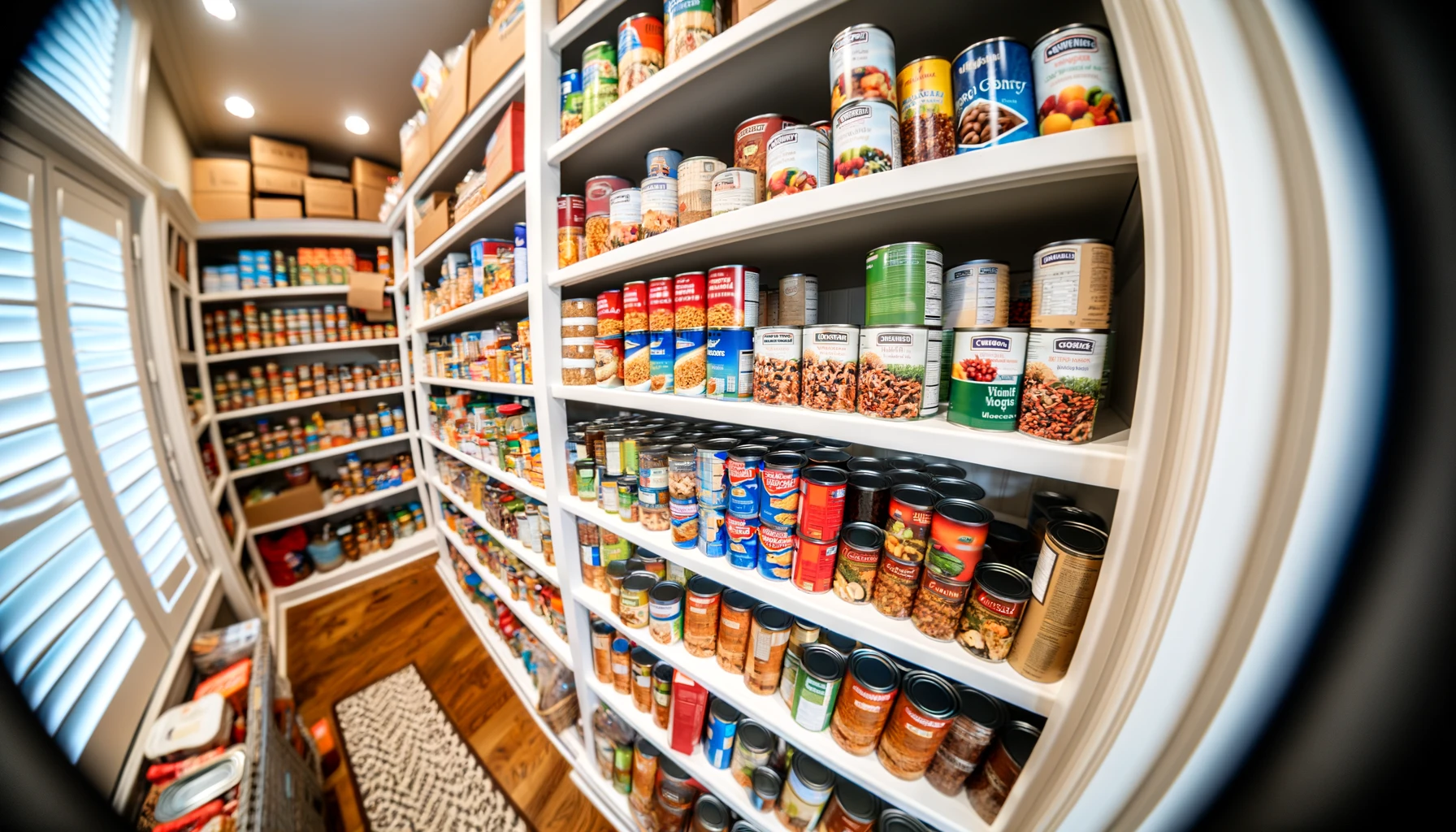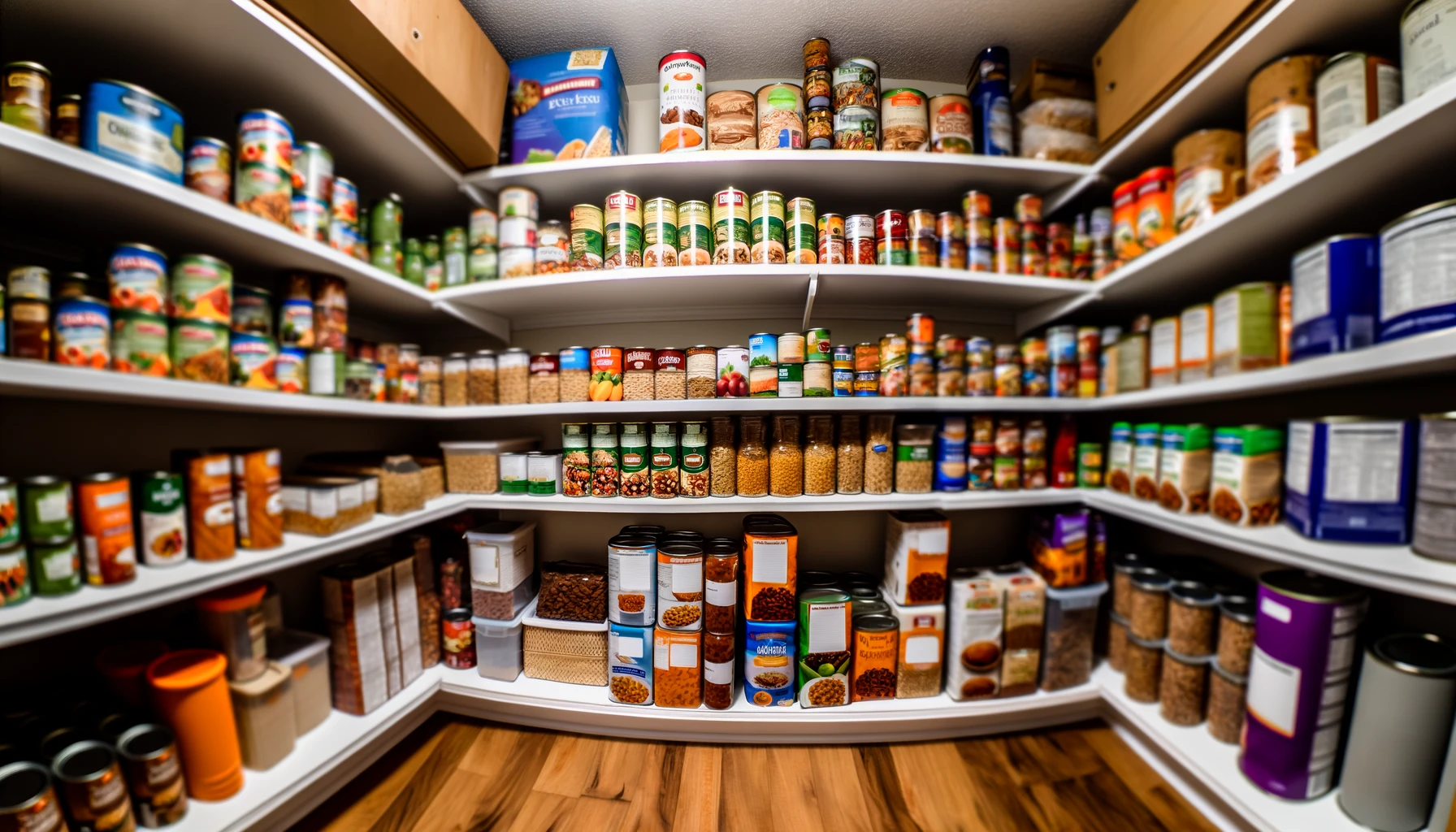Navigating an emergency food crisis demands more than just hope. It requires preparation, knowledge, and a strategic approach to ensure you and your loved ones stay nourished and safe. Whether it’s due to natural disasters, unforeseen emergencies, or global pandemics, having a plan in place for an emergency food supply is critical.
Food storage isn’t just for the overly cautious. It’s a fundamental aspect of homesteading and preparing for emergencies. By planning your emergency food needs, you can alleviate stress, worry, and the inconveniences that come with unexpected situations. The key is to focus on non-perishable foods that don’t require refrigeration, minimal or no preparation, and can be stored at room temperature.
Preparing a Three-Day Emergency Supply
For most disasters, a three-day emergency supply kit will suffice. This kit should include water, personal hygiene items, flashlights, blankets, and of course, food. Opt for compact and lightweight food items like ready-to-eat canned meats, fruits, vegetables, canned juices, and high-energy foods. Don’t forget essentials for infants, the elderly, or those on special diets. And very importantly, ensure you have a can opener and disposable utensils. Keeping these supplies in plastic bags will protect them from moisture and pests, and remember to rotate your stock to keep it fresh.
Preparing a Two-Week Emergency Supply
For longer emergencies, a two-week supply may be more appropriate, especially in areas known for extended power outages. This doesn’t just mean stockpiling more of the same; it means paying closer attention to nutritional needs. Homesteading principles come into play here, as self-sufficiency becomes crucial. Including a variety of foods that cover all nutritional bases and planning at least one well-balanced meal per day will help maintain health and morale over the duration.
Food Suggestions That Keep on the Shelf

For both short and long-term preparations, select shelf-stable foods that require little to no preparation. MREs, canned goods, dried fruits, nuts, and granola bars are excellent choices. Also, consider instant meals that only require water. Remember, water is just as important as food, so plan your water supplies accordingly.
If the Electricity Goes Off…
First, use perishable foods from your refrigerator and freezer. If you have a warning, fill empty spaces in your freezer with frozen water containers to extend the storage time of your food. In a well-insulated freezer, food can last for 2 to 3 days without power. Once those are used up, move on to your non-perishable food supply.
Cooking Without Power
In case of a power outage, be prepared to cook food outdoors using a charcoal grill, camp stove, or fire. For indoor heating, candle warmers, chafing dishes, and fondue pots can warm up food. However, remember that these are not suitable for cooking raw foods that require thorough cooking to be safe.
Additional Advice About Canned Foods
Canned foods are a staple in any emergency food supply because of their long shelf life and ease of use. Store them in a cool, dry place and regularly check for any signs of damage or expiration. After a flood, ensure canned foods are cleaned and sanitized before use.

Surviving an emergency food crisis is about more than just stocking up on food. It’s about smart planning, understanding nutritional needs, and ensuring you have the necessary tools and knowledge to use your supplies effectively. By embracing homesteading principles and preparing both short-term and long-term emergency food supplies, you can face any crisis with confidence.
Related Interests
Given the focus on emergency preparedness and food storage, people are also interested in related areas to enhance their readiness and resilience:
- Water Purification Techniques: In addition to food storage, knowing how to purify water is crucial in an emergency. Interest in portable water filters, purification tablets, and DIY purification methods is on the rise.
- Survival Gardening: Growing your own food is a key aspect of self-sufficiency. People are looking into survival gardening techniques, including permaculture, container gardening, and growing calorie-dense crops.
- Renewable Energy Sources for Emergencies: With the potential for power outages, there’s increased interest in renewable energy solutions like solar panels and portable solar generators to keep essential appliances running.
- First Aid and Medical Preparedness: Beyond food and water, being prepared for medical emergencies is critical. Courses in first aid, stocking a comprehensive medical kit, and knowledge of herbal remedies are sought after.
- DIY Skills for Self-Sufficiency: Skills such as canning, preserving food, sewing, and basic carpentry are valuable for emergency preparedness and long-term self-sufficiency, attracting attention from those looking to enhance their autonomy.
These related interests reflect a broader trend towards independence, resilience, and preparedness for a range of emergency situations, combining traditional skills with modern technology to ensure safety and sustenance.


